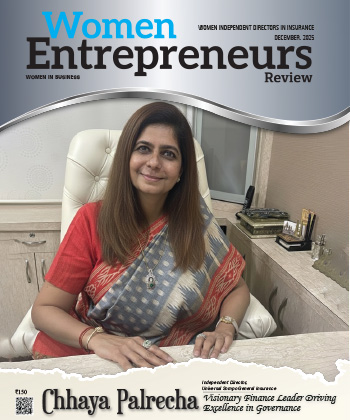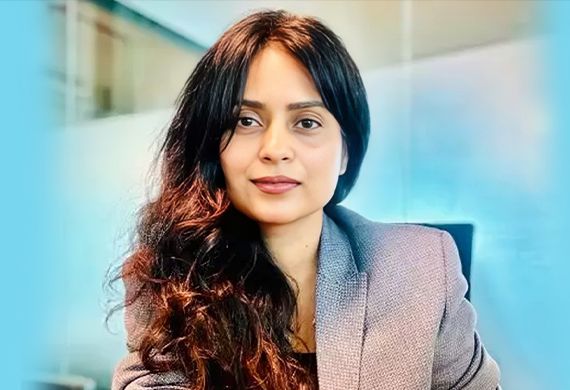
Balancing Exclusivity & Accessibility in India's Luxury Retail Market
By: Angelique Dhama, President, Obeetee
Angelique Dhama, co-owner of Thomas Goode, brings over 30 years of expertise in the luxury industry. She is recognized for her deep specialization in international luxury branding, strategic growth, and successfully expanding high-end brands across diverse global markets.
In an engaging interaction with Women Entrepreneurs Review Magazine, Angelique shares valuable insights on balancing exclusivity and accessibility in luxury retail, navigating digital transformation, and strategic market entry in India, while highlighting future trends and technologies set to reshape the luxury landscape.
In today’s luxury retail landscape, how do you navigate the challenges of balancing exclusivity with the growing demand for accessibility, especially in emerging markets like India?
Exclusivity remains central to luxury, but the definition of access is evolving — especially in markets like India, where aspiration is rising rapidly. The challenge isn’t about choosing one over the other; it’s about creating the right layers of experience. In-store environments continue to offer depth and immersion, while digital and event-led formats help introduce new audiences to the brand.
The goal is to expand reach without compromising identity. That means keeping the product, service, and storytelling consistent — whether the customer walks into a flagship or engages online. Luxury isn’t about being out of reach; it’s about being worth the reach. When done right, accessibility strengthens a brand’s relevance without losing its core.
With the rapid rise of e-commerce and omnichannel strategies, how do you ensure that luxury brands maintain their prestigious image while embracing digital transformation?
Digital is no longer optional — even for luxury. The key is to adopt it without losing the essence of what makes a brand special. That means investing in high-quality content, seamless user experiences, and personalized service across all channels. Every digital touchpoint must reflect the same attention to detail as a physical boutique.
Luxury brands succeed online when they use technology to enhance, not replace, the brand experience. Whether it’s virtual consultations, curated product drops, or thoughtful packaging, the focus remains on craftsmanship and care. A strong omnichannel strategy connects the dots between digital and physical, so the customer journey feels cohesive — not compromised.
Given your experience in expanding brands like Versace and Swarovski, what strategies do you think are crucial for successfully entering a market as diverse and complex as India today?
India is not one market — it’s many, layered by region, culture, and consumer mindset. Success here starts with deep local understanding. You can’t apply a global playbook without adapting it to local nuances. For brands like Versace and Swarovski, we focused on building strong local partnerships, investing in the right locations, and tailoring our storytelling to connect emotionally with Indian consumers.
Luxury in India is aspirational but also deeply personal. So, strategies that combine global brand strength with local relevance — whether through product curation, service personalization, or cultural alignment — are key. Patience and consistency matter. You have to build trust over time while staying sharply positioned.
What role do you think sustainability and ethical practices play in shaping the future of luxury retail, and how are brands adapting to these shifting consumer expectations?
Sustainability is no longer a trend — it’s a fundamental expectation, especially among younger luxury consumers. They want to know not just what they’re buying, but how and why it was made. For luxury brands, this creates both a challenge and an opportunity. Ethical practices must be built into the business model — from sourcing and production to packaging and aftercare.
What’s important is authenticity. Consumers can see through greenwashing. The brands that are leading the way are those that communicate transparently and act consistently. Sustainability in luxury is about responsibility without compromising on quality, design, or craftsmanship. Done right, it adds long-term value to the brand and builds deeper trust with customers.
In the face of global economic uncertainty, how can luxury retail brands innovate without losing their identity, and what approaches are you using to keep your brands relevant?
In times of uncertainty, luxury brands need to stay focused on what they do best — while being agile in how they deliver it. Innovation doesn’t mean changing who you are; it means finding new ways to express your identity. That could be through digital storytelling, limited collections, experiential retail, or new service models that create real value for the customer.
The brands that remain relevant are the ones that listen, adapt, and stay consistent. We keep our focus on quality, design, and emotional connection — while staying open to change in how we operate, communicate, and sell. Relevance comes from staying true to your purpose, even as the world shifts around you.
As a leader in the retail industry, what emerging trends or technologies do you foresee reshaping luxury retail in the next five years, and how can brands prepare for these changes?
Over the next five years, I see three key forces reshaping luxury retail: immersive technology, data-driven personalization, and conscious consumption. AI and AR will redefine how consumers discover and experience products — both online and in-store. At the same time, brands will need to use data more intelligently to create tailored journeys without becoming intrusive.
Sustainability will become non-negotiable, with greater demand for transparency and accountability. To stay ahead, brands must invest in technology that enhances—not replaces—the human experience, and build internal cultures that are agile and purpose-driven. Luxury will always be about emotion and meaning. The difference is, the tools we use to deliver are changing fast.
Most Viewed
- 1 Women's Health Startup HerMD Closing Doors Amid Industry Challenges
- 2 5 Famous Women in Indian Armed Forces
- 3 Saudi Women No longer Require Male Permission for Clothing Choices, says Prince MbS
- 4 Kolkata Medtech Startup Innovodigm Raises Rs 5.5 Crore Seed Funding Led by IAN Group
- 5 Yamunanagar's Kashish Kalra Honoured after Securing 111th Rank in UPSC Civil Services Exam
- 6 Madurai Appoints Its First Woman Corporation Head
- 7 IAS Vijayalakshmi Bidari Appointed as the new Nagpur Divisional Commissioner
- 8 American Entrepreneur Lucy Guo Overtakes T Swift to become Youngest Female Billionaire
- 9 ICC Women's World Cup 2025 Trophy Showcased at Indore's Holkar Stadium
- 10 Aparna Saxena's Beauty Venture AntiNorm Launches in India
- 11 Vidya Nataraj Co-Founded BlueStone Jewellery & Lifestyle files IPO
- 12 5 Women Freedom Fighters of India
- 13 Dr. G Krishnapriya appointed as CEO for Trichy
- 14 M3M & Sirona Partner to Introduce Menstrual Hygiene Vending Machines in 15 Locations
- 15 Punjab Govt launches SHE Cohort 3.0 Supporting Tech-led Women Startups
- 16 Indian origin Lawyer, Sweena Pannu appointed as the US New Superior Court Judge
- 17 The Aurora Tech Award recognizes 4 Indian Women-led Startups
- 18 Kerala's Republic Day parade featured an all-female tableau
- 19 Manisha Kabbur Becomes Karnataka's First Woman International Karate Coach
- 20 Director K. S. Ravikumar's Daughter Maalica Ravikumar Launches Life Coaching Company 'Evergrowth Academy' for Women
- 21 Leezu's Raises Pre-Seed Funding to Accelerate Growth in Sexual Wellness Industry
- 22 Sattu: Super-easy summer drink for PCOS gut healing
- 23 Swathi Nelabhatla creates Sitha App, India's First Women-Exclusive Gig Platform
- 24 7 Timeless Female Kathak Dancers & their Iconic Legacies
- 25 Meet 7 Iconic Women Architects of Modern India & their Most Impactful Work
- 26 This Woman-led Insuretech Startup is Helping Bridge the Education Financing Gap in India
- 27 Women Leaders Share Lessons Learnt from India Women's WC Win
- 28 5 Enterprising Women Founders Powering Singapore's Tech & Innovation Landscape
- 29 4 Women. 4 Stories. One Vision for Smarter, Stronger Healthcare
- 30 Global Gender Gap Narrows to 68.8%, But Full Equality 123 Years Away: WEF Report 2025
- 31 Changemakers: 7 Women Entrepreneurs Taking the Make in India Movement Forward
- 32 Meet Lucy Guo, The Youngest Self-Made Female Billionaire Disrupting Tech
- 33 How Women are Driving India's Festive Online Shopping Surge






